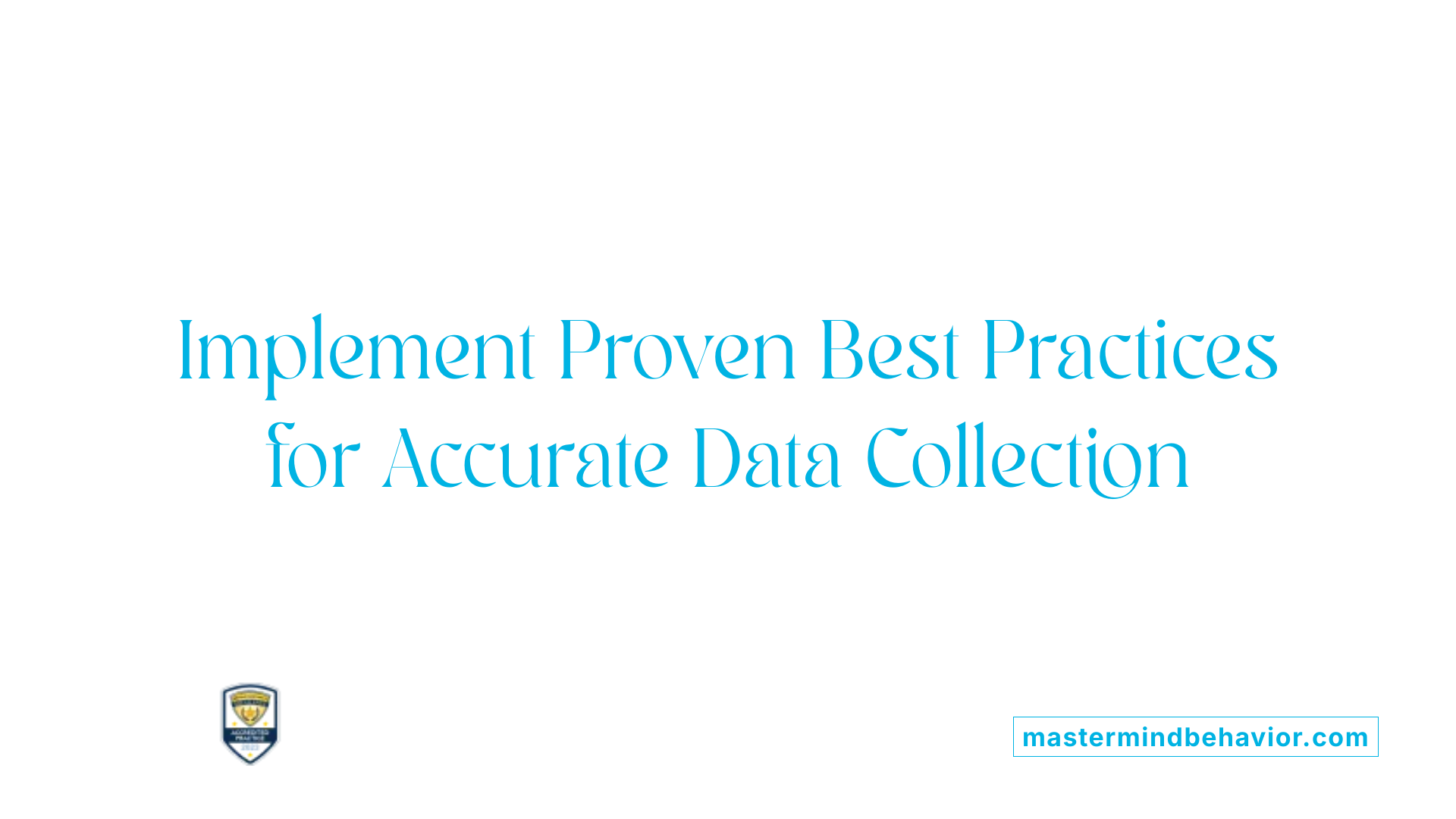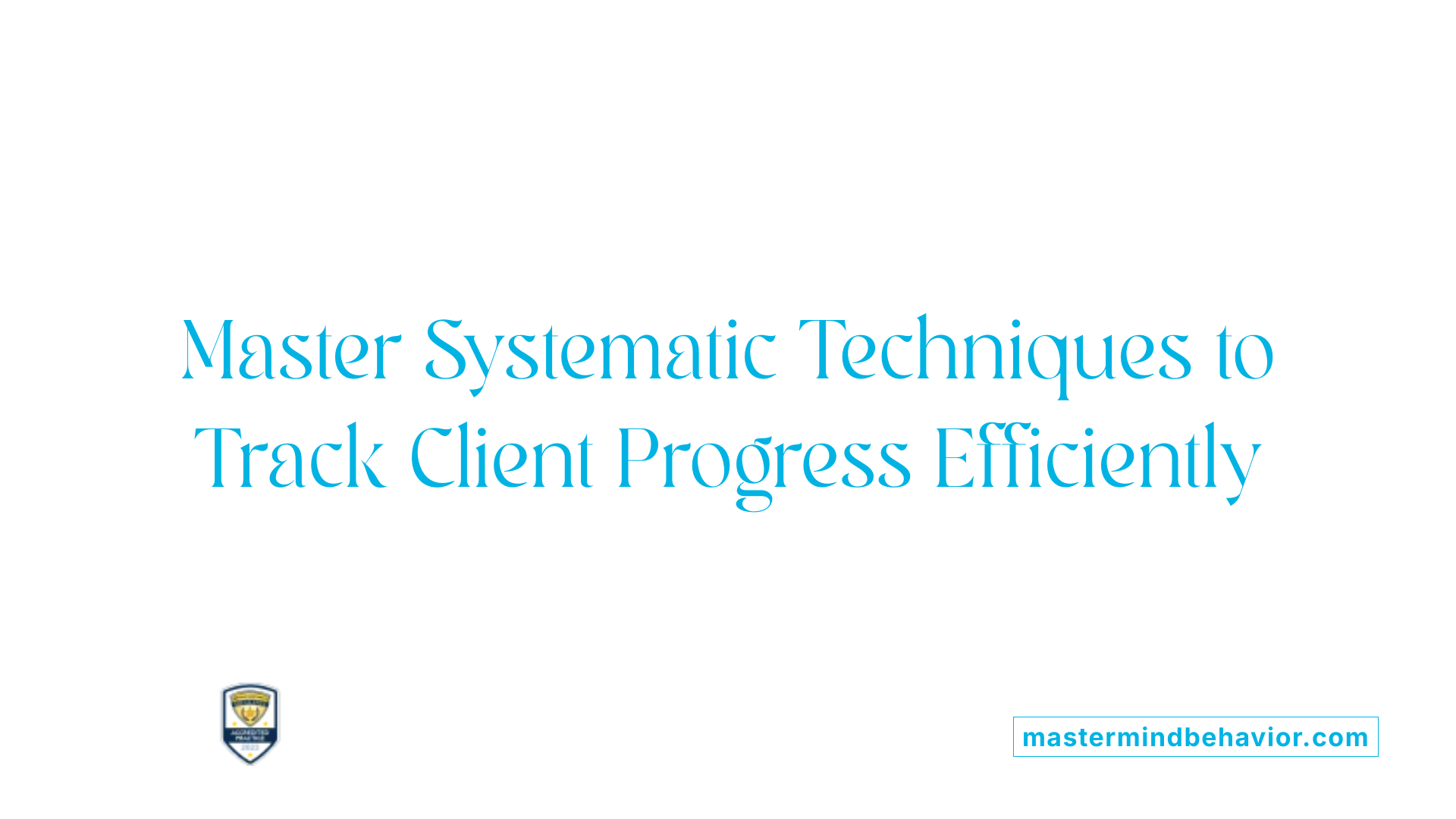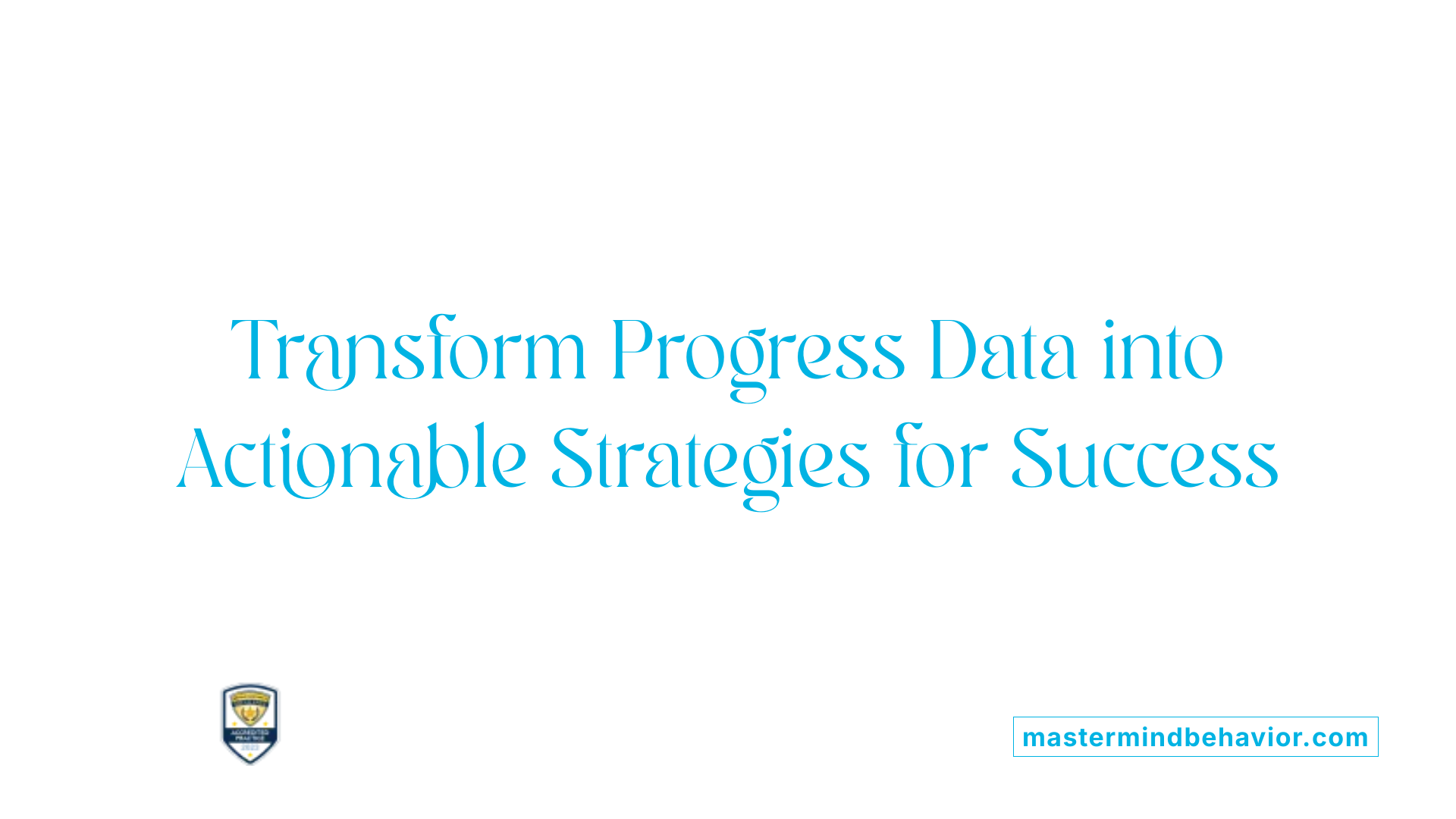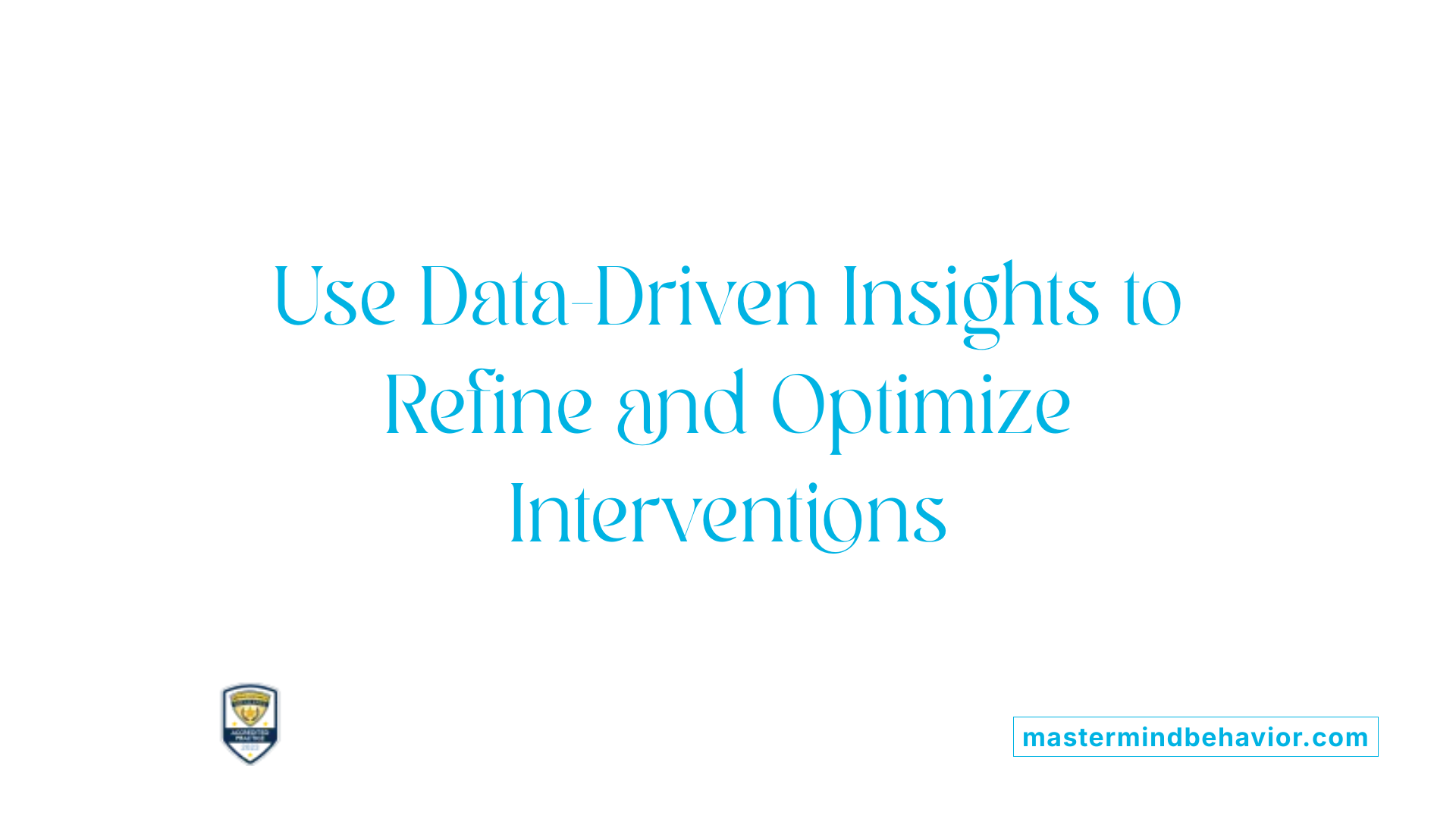Understanding the Foundation of Progress Tracking in ABA
Applied Behavior Analysis (ABA) is a science-driven approach tailored to improve specific behaviors and skills in children with developmental challenges. Central to ABA is meticulous progress monitoring, which ensures interventions remain effective and responsive to each child's evolving needs. This article explores best practices for tracking, analyzing, and utilizing progress data to optimize therapeutic outcomes.
Core Principles of Effective Progress Monitoring in ABA
What are the core principles of successful progress monitoring in ABA therapy?
Successful progress monitoring in Applied Behavior Analysis (ABA) hinges on several fundamental principles that ensure interventions are effective and tailored to each child's needs.
First, consistent and systematic data collection is crucial. This involves recording behaviors during therapy sessions through methods like frequency counts, duration recordings, and interval sampling. Regular data collection helps in building an accurate picture of the child’s behavior patterns and responsiveness to interventions.
Second, individual assessment is vital. Every child’s developmental trajectory and behavioral responses are unique. Using standardized tools such as the VB-MAPP or ABLLS-R allows therapists and caregivers to evaluate progress across specific skill domains and identify areas that need targeted support.
Ongoing data analysis complements collection efforts. Visual tools like graphs and charts—line graphs, bar charts, and scatter plots—help visualize progress over time, making trends and stimulating factors readily apparent. Analyzing data against initial baselines allows clinicians to assess whether interventions are effective or require modification.
Collaboration with caregivers forms the backbone of a successful ABA program. Involving parents and other caregivers in data collection and review fosters consistency across environments and enriches understanding of the child's behavior outside of therapy sessions. Regular updates and reports keep everyone informed and engaged.
Finally, all interventions should be rooted in core behavioral principles and guided by the seven dimensions of ABA—behavior, analytic, technological, conceptual, effective, and generality. These dimensions serve as a framework for designing, implementing, and refining evidence-based strategies.
Incorporating these principles ensures that progress monitoring is not only systematic but also adaptive, fostering continuous improvement in a child's developmental journey. This comprehensive approach enhances the relevance, consistency, and effectiveness of ABA therapy.
| Principle | Description | Implementation Example |
|---|---|---|
| Consistent Data Collection | Regularly recording behaviors during each session | Using apps like ABA Skills for real-time data logging |
| Individualized Assessment | Tailoring evaluations to the child's specific developmental stage | Using standardized checklists like the Modified Checklist for Autism in Toddlers |
| Ongoing Data Analysis | Continuously analyzing trends to guide intervention decisions | Creating visual progress charts and reports |
| Caregiver Collaboration | Engaging parents in data collection and review | Sharing progress reports and involving them in goal setting |
| Behavioral Principles Use | Applying core ABA principles to intervention design | Reinforcing skills in natural settings with functional reinforcement |
This approach reinforces the importance of a dynamic and collaborative process that centers on data-driven decisions, ultimately optimizing outcomes for children receiving ABA therapy.
Best Practices for Data Collection in ABA Therapy

What are the best practices for data collection in ABA therapy?
Effective data collection in ABA therapy hinges on choosing methods that align with the child's specific behaviors and the targeted goals. Common approaches include frequency counts, duration recordings, and interval sampling. These methods help quantify behaviors accurately, providing useful metrics for progress monitoring.
Consistency and precision are vital. To ensure reliability, therapy providers should develop clear protocols, consistently train staff, and utilize dependable tools and technology. Digital platforms such as ABA-specific apps and software, like Raven Health, help automate data recording, reduce human errors, and facilitate real-time analysis.
It’s important to collect data from various settings and across multiple sessions for a comprehensive view of the child's progress. This systematic approach enables clinicians to spot patterns, evaluate the success of interventions, and make timely modifications.
Regular analysis — through graphs, trend lines, and detailed reports — supports understanding developmental trajectories and adjusting treatment strategies accordingly. Clear definitions of target behaviors prevent ambiguity, ensuring everyone involved understands what behaviors are being measured.
A well-structured, ongoing data collection process is the backbone of effective ABA therapy, helping to shape customized interventions and track meaningful progress over time.
Setting Goals and Benchmarks for Success

How do you set achievable goals and benchmarks in ABA therapy?
In ABA therapy, establishing attainable goals is fundamental for guiding effective interventions and motivating children. The process begins with thorough assessments that evaluate the child's current skills across various domains such as communication, social interaction, daily living, and safety.
Collaborating closely with caregivers is vital to understand the child's individual needs, family priorities, and realistic expectations. This partnership ensures that goals are meaningful and tailored to each child's unique context.
Using the SMART framework—Specific, Measurable, Achievable, Relevant, and Time-bound—helps formulate clear and practical targets. For example, rather than aiming for vague improvements, a goal might specify that the child will use a functional communication device to request snack items independently within three months.
Breaking down these goals into smaller, manageable steps makes progress more attainable and tracks incremental success. Each step should be designed as a mini milestone, such as increasing eye contact duration or mastering a particular coping skill, which collectively lead to broader developmental objectives.
Focusing on functional skills ensures that goals translate into meaningful everyday improvements, like using words to express needs or following safety routines. Regular data collection and ongoing progress monitoring are essential to gauge effectiveness.
Periodic reviews allow therapists and caregivers to adapt goals based on the child's evolving skills and circumstances. Celebrating small achievements and reinforcing positive behavior sustain motivation and build confidence.
In sum, setting realistic, well-structured goals through teamwork and systematic evaluation fosters a supportive environment that encourages continuous growth and development for children undergoing ABA therapy.
Tools and Methods for Tracking Client Progress

What are effective methods and tools for tracking progress in ABA therapy?
Tracking a child's progress in ABA therapy relies on a mix of systematic data collection methods, advanced digital platforms, and regular progress reviews. One of the foundational approaches involves using everyday tools like checklists, frequency counts of target behaviors, and duration or interval sampling techniques. These methods offer quantitative insights that help define a child's current behavior and measure improvements over time.
Behavior analysts often employ ABC analysis—focusing on Antecedents, Behaviors, and Consequences—to identify behavioral triggers and patterns. For seamless data management, many clinics turn to digital platforms such as Rethink Behavioral Health, Central Reach, or ABA Skills. These tools enable real-time data entry, automatic graphing, and easy sharing with caregivers, enhancing both accuracy and efficiency.
Baseline measurements are established at therapy onset to set reference points. Clinicians then record progress scores during ongoing sessions, noting changes in frequency, duration, and intensity of behaviors. Regular assessments, along with standardized tests like VB-MAPP and ABLLS-R, help gauge developmental milestones aligned with customized goals.
Progress reports and caregiver updates play a vital role too. Therapists prepare detailed but accessible reports that outline achievements, areas needing improvement, and suggested adjustments. Involving parents through clear, data-backed updates ensures consistency across environments and fosters collaborative goal setting.
Combining qualitative observations—such as session notes, video diaries, and artwork—with quantitative data provides a well-rounded picture of progress. This dual approach allows for adjustments tailored to the child's evolving needs, ensuring therapy remains relevant and effective.
In summary, effective ABA progress tracking integrates various data collection methods, leverages technology for accuracy, and emphasizes collaboration to achieve meaningful behavioral improvements.
Analyzing and Utilizing Progress Data to Inform Interventions

How can progress data be analyzed and utilized to inform intervention strategies?
Progress data collection is vital for understanding how a child's behavior changes over time. Clinicians analyze this data by looking for trends, recurring patterns, and deviations from expected progress. For example, if frequency counts of a challenging behavior decrease after a specific intervention, it indicates effectiveness. Conversely, if the targeted skill isn't improving, strategies may need adjustment.
Regular review of data such as frequency, duration, and qualitative observations helps practitioners assess the success of current methods. This ongoing analysis guides decisions to continue, modify, or replace intervention strategies. Visual tools like graphs and charts—line graphs showing progress over time or bar charts comparing different skills—make it easier to detect trends and patterns quickly.
By comparing current performance to baseline and goal benchmarks, therapists can identify whether progress is on track or if immediate action is needed. These insights lead to personalized adjustments, ensuring interventions match the child's developing needs.
Progress reports generated from systematic data serve a dual purpose: they document progress and provide a communication bridge among therapists, parents, and other stakeholders. These reports summarize key findings, illustrating what strategies are working and highlighting areas requiring further support.
Incorporating digital tools and AI-based platforms enhances this process. Automated data logging, real-time visualization, and trend analysis speed up decision-making. Smart software can alert clinicians to plateaus or regressions, prompting timely modifications.
In summary, analyzing progress data involves reviewing patterns, visualizing trends, and making informed choices about intervention adjustments. This adaptive approach ensures interventions remain effective and tailored to each child's evolving needs.
Guiding Intervention Adjustments and Ensuring Effectiveness

How should progress data guide intervention adjustments in ABA therapy?
Progress data is essential for shaping the course of ABA therapy. Clinicians constantly monitor behavioral responses and skill development through systematic data collection, including frequency counts and duration recordings. This information is then compiled into visual formats like line graphs, bar charts, or scatter plots, making it easier to spot trends and patterns.
If the data reveals stagnation or regression, therapists can modify intervention strategies promptly. For example, if a particular reinforcement is no longer motivating the child, switching to different reinforcers or adjusting the reinforcement schedule can help. Consistent comparison of current data with baseline measurements allows for realistic goal setting and ensures that interventions stay aligned with the child's evolving needs.
Adjustments might also involve changing the focus of sessions, introducing new targets, or increasing session intensity. The idea is to ensure that each step moves the child closer to their individualized goals, promoting progress and preventing plateaus.
Fostering collaboration with families is equally important. Sharing progress data with parents helps them understand the child's development, reinforces learning at home, and supports unified intervention efforts. Regular updates and transparent communication enable a team approach, optimizing the child's growth.
Fostering a Collaborative, Data-Driven Approach to ABA Progress Monitoring
Effective progress tracking in ABA therapy hinges on systematic, accurate data collection, clear goal setting, and dynamic analysis. By utilizing technological advancements and fostering collaboration among clinicians, parents, and caregivers, therapy providers can make informed adjustments — ensuring interventions remain relevant, targeted, and effective. Ultimately, rigorous monitoring combined with flexible, individualized strategies leads to optimal developmental outcomes for children. Implementing these best practices transforms ABA into a precise, efficient, and impactful process — maximally supporting each child's growth and success.
References
- 7 Essential ABA Data Sheets for Tracking Your Child's Progress
- Tips for Tracking Progress in Children With Autism
- Data-Driven Progress: How ABA Tracks Your Child’s Growth
- The Importance of Data in ABA Therapy: Tracking Progress with ...
- Are You Missing Key Progress Signals in Your Autism ABA Therapy ...
- How to Create Measurable ABA Goals in Autism Therapy
- Monitoring Progress in ABA Therapy: Gauging Success and Guiding ...
- Tracking Progress: How To Measure ABA Therapy Success
- ABA Therapy Goals: 25 Practical Examples & Timelines
- How to Set ABA Goals: Timeframe and Examples | Support Plans









